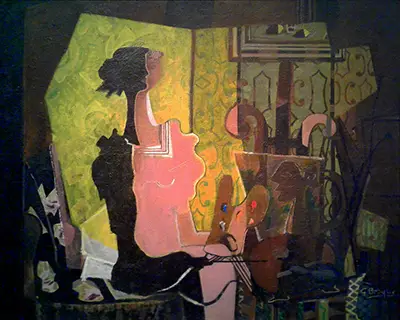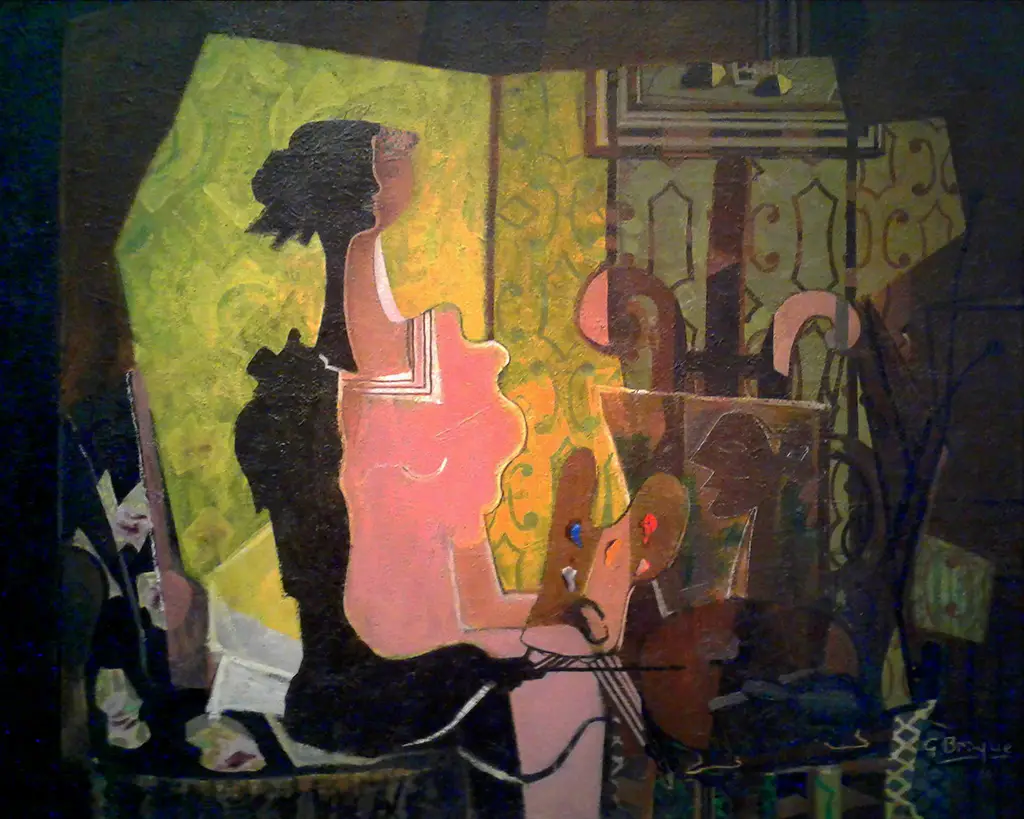This artwork serves as another example of how Georges Braque would use sand within some of his abstract paintings. He did so inorder to increase the textures of the painting, even though he would never have intended for anyone to actually touch the piece with their hands. He liked still life art because of the way that he could control the composition and also view each element from different angles whilst formulating the piece. His interest in sculpture would become inevitable as he started to desire to touch and become involved in his creations and items such as this painting were as far as he could take painting into the third dimension without hitting its inherent restrictions in that regard.
Within the scene itself, we find a female model sat down in the artist's studio, in Varengeville. He produced a number of pieces which had the models either painting or playing musical instruments. He uses a dark shadow to frame most of the content, whilst within that, everything else is draped in light. She is particularly dark on one side, where an abrupt form of shadowing is used.
Visitors to the Metropolitan Museum of Art will need to check ahead if there is a specific artwork that you want to see (at the time of writing, Woman Seated at an Easel was not currently on display ) - their collection is huge and so not everything can be put on display at the same time. Items may be rotated from time to time, plus loaned out elsewhere on occasion. Those fortunate enough to get to this fine venue will also be able to see other related artists within their collection, besides their original Braque pieces, including the likes of John Singer Sargent, El Greco, Giorgio de Chirico, Childe Hassam and Jean-Auguste-Dominique Ingres, though it is really impossible to summarise such as diverse collection down to just a few names. Several publications are available that detail their highlights in a more comprehensive manner.



